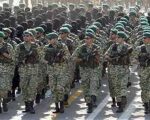At DSEI 2025 in London, Belgian defense manufacturer FN Herstal showcased a broad portfolio of advanced small arms and remote weapon systems (RWS), reinforcing its position as a key supplier of NATO-standard infantry solutions. The display emphasized modularity, digital integration, and enhanced lethality for both manned and unmanned platforms.
deFNder Remote Weapon Stations: Expanding Capabilities Across Calibers
One of the centerpieces of FN Herstal’s exhibit was the family of deFNder remote weapon stations (RWS), which continue to evolve in response to battlefield demands for precision firepower from protected positions. The deFNder range includes three primary variants:
- deFNder Light: Optimized for light vehicles or static use with 5.56mm or 7.62mm machine guns.
- deFNder Medium: Supports heavier armaments such as the FN MAG (7.62×51mm) or FN M2HB-QCB (12.7×99mm).
- deFNder Heavy: Designed for maximum firepower with stabilized firing of .50 cal M2HB or even automatic grenade launchers like the MK19.
The latest iterations feature improved stabilization algorithms for firing on-the-move and enhanced sensor packages including day/night electro-optical sights with laser rangefinders. The systems are integrated with digital fire control modules that allow ballistic computation in real-time.
According to company representatives at DSEI, the deFNder Medium is now offered with a dual-feed option allowing rapid switching between ammunition types—a capability increasingly valued in asymmetric warfare where threat profiles can vary rapidly.
New Developments in Infantry Weapons: SCAR Family and Evolutions
In addition to RWS platforms, FN Herstal exhibited its updated SCAR (Special Operations Forces Combat Assault Rifle) family—comprising SCAR-L (Light), SCAR-H (Heavy), and SCAR-SC (Subcompact). These rifles are chambered respectively in 5.56×45mm NATO and 7.62×51mm NATO calibers.
The SCAR platform remains popular among NATO special forces due to its modular architecture—allowing barrel changes between calibers—and ambidextrous controls suited for urban warfare. At DSEI 2025, FN introduced a new generation upper receiver featuring an integrated monolithic rail system compatible with STANAG optics and accessories.
The company also demonstrated improvements in recoil mitigation via redesigned buffer assemblies and lighter materials that reduce overall system weight without compromising durability under sustained fire conditions.
Integrating Small Arms into Networked Battlefield Environments
A notable theme across FN Herstal’s booth was digitization—the integration of individual weapons into broader C4ISR ecosystems. This reflects growing demand among armed forces for networked soldier systems capable of sharing targeting data across platforms.
The company highlighted its SmartCore® technology—a shot counter embedded within the weapon that tracks round count, maintenance cycles, and usage patterns via RFID/NFC interfaces. When paired with command-and-control software suites or logistics management tools, SmartCore enables predictive maintenance scheduling and ammunition resupply planning based on real-time usage metrics.
This aligns with NATO’s push toward connected infantry ecosystems where every node—from rifleman to UAV—is part of an interoperable digital mesh network.
NATO Interoperability Remains Core Design Principle
All showcased systems adhere strictly to NATO standards—particularly STANAG dimensions for magazines, optics mounts (Picatinny/MIL-STD-1913), ammunition calibers (5.56/7.62/12.7 mm), and communication protocols when applicable to RWS units.
This ensures seamless integration into multinational task forces such as those deployed under EU Battlegroup frameworks or NATO Response Force rotations—key markets where Belgium’s defense industry maintains strong export ties.
The deFNder RWS has already been adopted by multiple European users including France (for VBCI upgrades), Denmark (Piranha V IFVs), Estonia (CV90s), as well as non-European customers like Indonesia who deploy it on naval fast attack craft—a testament to its cross-domain utility.
Applications Beyond Land Forces: Naval & Airborne Integration Potential
While primarily designed for ground vehicles or static installations such as border outposts or forward operating bases, FN Herstal is actively promoting navalized versions of the deFNder Medium RWS tailored for patrol boats or corvettes operating in littoral environments where close-in defense is critical against asymmetric threats like swarming fast boats or UAVs.
The company has also explored airborne applications—most notably helicopter door gun mounts using stabilized versions of their .50 cal platforms—but these remain niche compared to land-based deployments due to weight constraints and vibration challenges inherent to rotary-wing aircraft operations.
Sustainment Support Through Lifecycle Services & MRO Packages
A final emphasis at DSEI was placed on lifecycle support offerings—ranging from initial operator training packages through depot-level maintenance programs tailored by region. With many militaries shifting toward Total Package Procurement models that include long-term sustainment clauses from Day One contracts, OEMs like FN Herstal are aligning their business models accordingly.
The company offers field service representatives embedded with end-users during deployment phases as well as mobile diagnostic kits compatible with SmartCore-enabled weapons—allowing forward units to conduct preventive maintenance without needing full workshop access.
Conclusion: Modular Firepower Meets Digital Integration
DSEI 2025 reaffirmed FN Herstal’s commitment to delivering adaptable combat solutions across domains—from dismounted infantry rifles to vehicle-mounted heavy machine guns governed by advanced optics and fire control software. As militaries modernize toward multi-domain operations emphasizing speed-of-engagement and survivability under armor or cover—the Belgian firm appears well-positioned through its focus on modularity, digitization, and proven interoperability within NATO frameworks.









